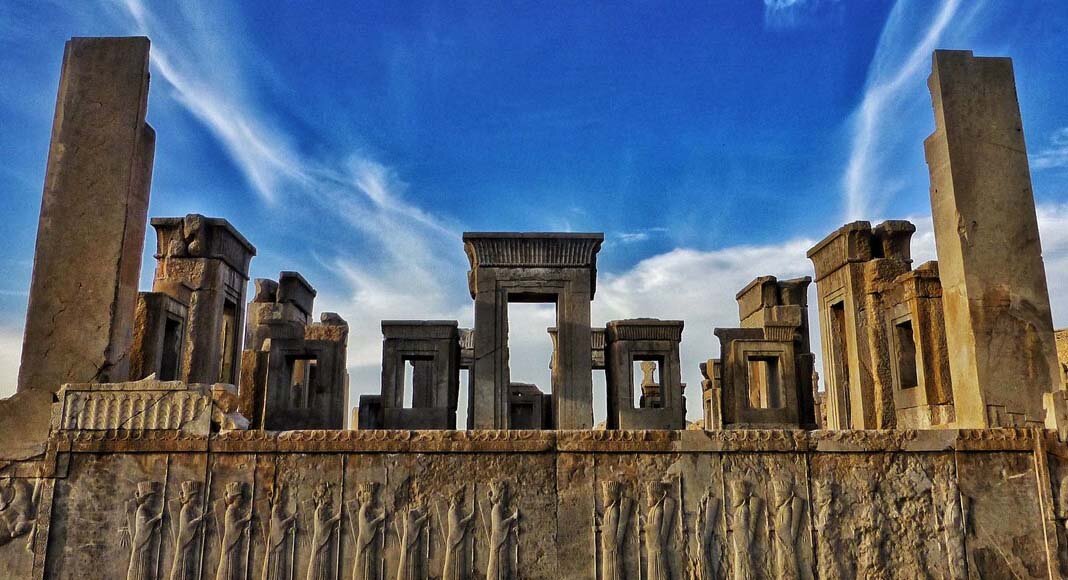Persepolis birthplace of Iran's history, official says

TEHRAN- The Director of the World Heritage Site of Persepolis has described this cultural landmark as the birthplace of Iran’s history—a heritage that all Iranians feel connected to.
On the occasion of the 45th anniversary of Persepolis's registration as a UNESCO World Heritage site, Alireza Askari Chaverdi remarked that the term 'Iran' embodies a complex philosophical concept deeply rooted in the historical culture of the land, fundamentally reliant on Persepolis, ISNA reported on Saturday.
He added that Persepolis is not merely an ancient artifact; it signifies the genesis of Iranian history. "All Iranians understand their existential philosophy in connection with Persepolis, as it embodies the epistemic system of the Iranian people," he noted.
Askari Chavardi emphasized that Persepolis has not only intertwined the various ethnic groups of present-day Iran but has also served as a connecting thread for the territorial cohesion of Iran throughout ancient times. This connection is invaluable, as it has sustained the cultural unity of Iran through the language of art across history.
He also highlighted that people from all corners of Iran today consider Persepolis to be their own, as they have a historical bond with it. He stressed that all Iranians regard the preservation of their national culture as essential, with Persepolis giving meaning and significance to their ancient national identity.
He pointed out that the kinship ties of Greater Iran's cultural core with its neighboring regions to the east, west, north, and south shaped the cultural identity of the east in opposition to the west during antiquity, and these connections played a significant role during the Islamic period within the eastern realm of Islam. Many countries in today’s West Asia inherit remnants from Iran’s ancient era, and a substantial portion of Iran's current cultural ties with these nations dates back to their historical dimensions within the Achaemenid Empire.
Askari Chavardi recalled that during the Achaemenid period, over 30 provinces were incorporated into ancient Iran’s realm. Although they culturally differed to some extent from the official cultural domain at the center of governance, the regime made efforts to enhance cultural convergence and proximity within its political structure by developing communicative capabilities and creating symbolic representations of its ideological roots.
Askari Chavardi noted that the artistic and cultural reflections of Persepolis were institutionalized in the context of the people of the West Asia during the Achaemenid period, which subsequently ensured the continuity of Greater Iran's cultural cohesion in later eras. He added that the construction of Persepolis incorporated elements of ancient Middle Eastern art, establishing artistic methods rooted in the historical culture of the Achaemenid domain in a way that even today, not only the people of Iran but also the societies of ancient West Asia seek their connection to this cultural core represented by Persepolis.
He continued that this historical continuity during the Sassanid period and the Islamic era instilled the notions of independence, freedom-seeking, and legitimate power of historical Iran in the region and the world.
He emphasized that the concept of historical cultural Iran does not culminate into a singular topic; rather, it encompasses a collection of ideas which can be identified and understood in the spatial and cultural context of ancient Iran at Persepolis.
Persepolis, the ceremonial capital of the Achaemenid Empire, is celebrated as one of the most remarkable architectural achievements of the ancient world. Erected approximately 2,500 years ago, this UNESCO World Heritage site exemplifies advanced stone carving and cutting techniques employed by ancient Persian craftsmen. The site is renowned for its vast palatial complexes, intricate bas-reliefs, and towering stone columns, each a testament to the extraordinary skill and artistry of its builders.
Designated as a UNESCO World Heritage site in 1979, Persepolis symbolizes the wealth and power of the Achaemenid dynasty, as well as its artistic accomplishments. Several grand structures, including the Apadana Palace and the Throne Hall, illustrate the grandeur of Persian architecture, showcasing the empire's ambition and sophistication. The numerous stone monuments at Persepolis are significant not only for their historical importance but also for their role in highlighting ancient Persian innovations in stonework.
Visitors to Persepolis can marvel at detailed carvings depicting soldiers, dignitaries, and scenes of royal ceremonies, alongside elaborate decorative motifs that reflect the culture and values of the Achaemenid Empire. The artistry and craftsmanship displayed at this site have left a lasting legacy, inspiring generations of artists, architects, and historians.
Persepolis stands as a powerful reminder of a pivotal era in human history, capturing the essence of a civilization that made significant contributions to art, architecture, and governance. Its enduring presence continues to captivate and educate those who seek to understand the complexities of the ancient world, ensuring that the legacy of the Achaemenid Empire remains alive for future generations.
SAB/
Leave a Comment